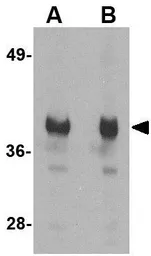GAPDH antibody
Cat. No. GTX85118
Cat. No. GTX85118
-
HostChicken
-
ClonalityPolyclonal
-
IsotypeIgY
-
ApplicationsWB ELISA
-
ReactivityHuman, Mouse, Rat
